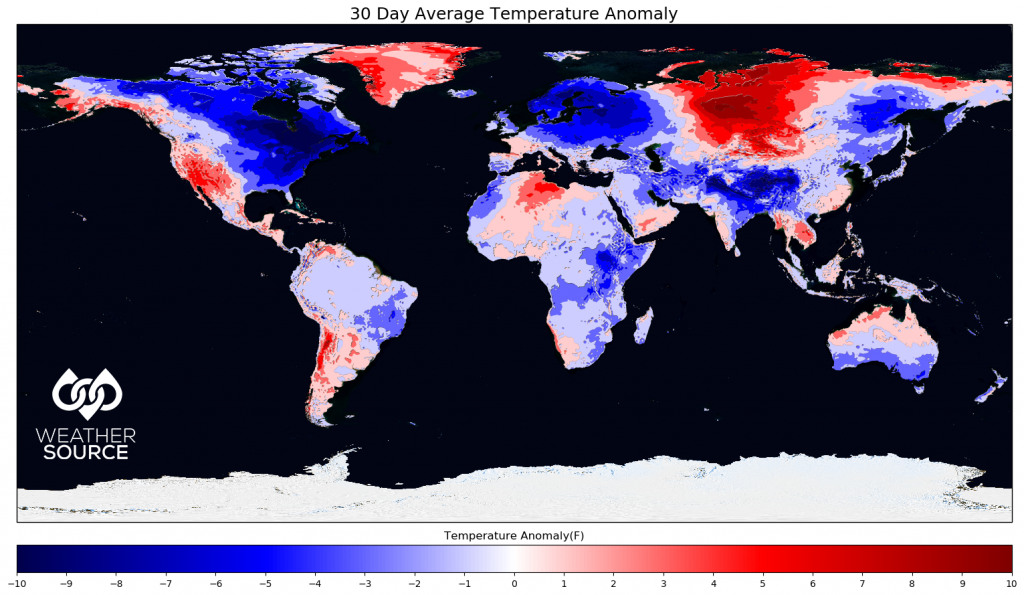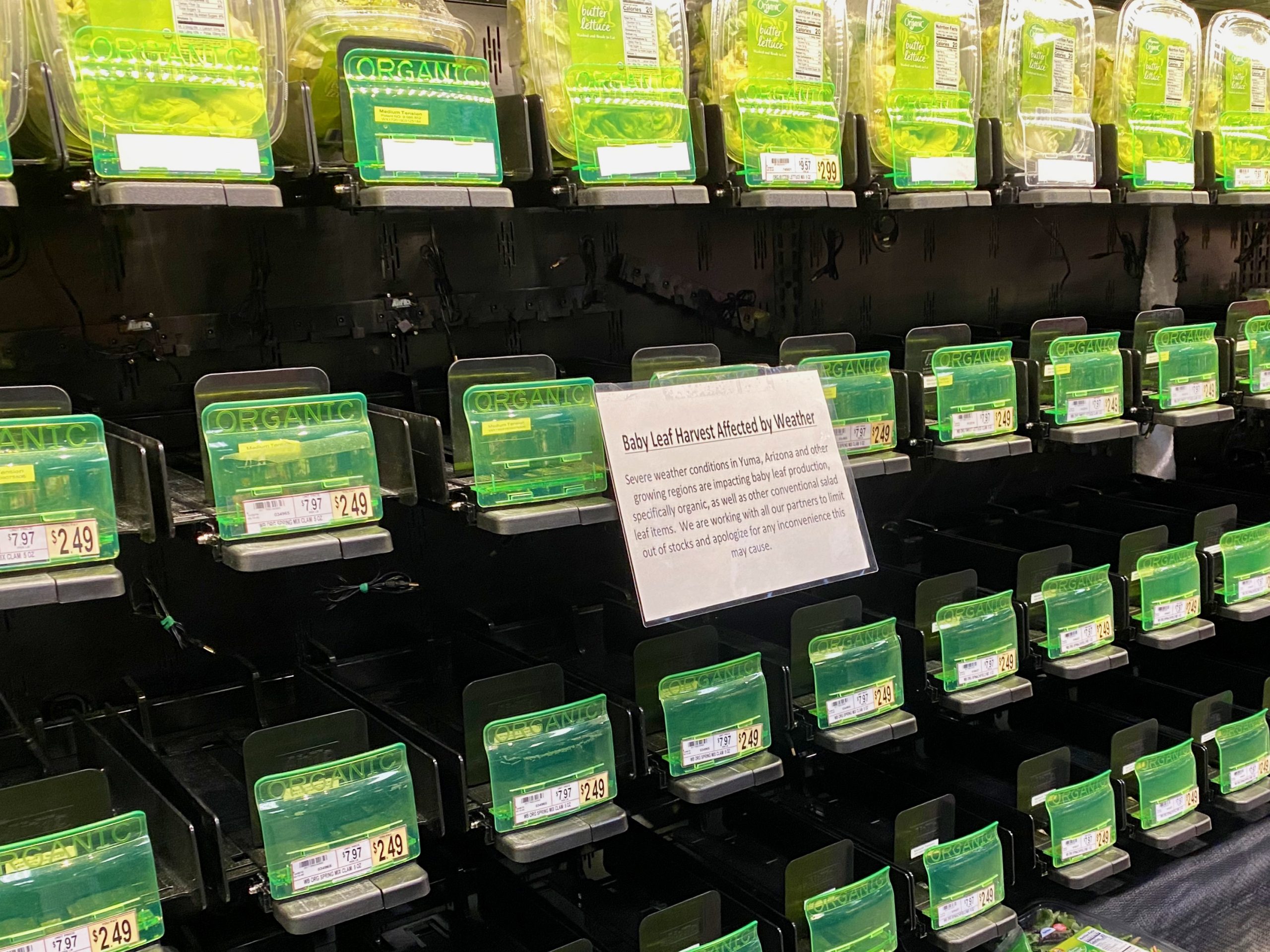Anomalous weather patterns can alter both the supply and demand for consumer foods. When combined with other market forces such as COVID-19, the effects of weather are compounded.
Weather Source CEO Mark Gibbas participated in a panel discussion May 20 titled “From Crops to Kroger,” during which he discussed the impact of both COVID-19 and weather on agriculture, grocery inventory, and restaurant dining. The panel was part of BattleFin’s Virtual Discovery Days series, which for the month of May focused on reopening the economy in the wake of the pandemic.
Quantifying Agricultural Impact
Gibbas began with an example of how Weather Source helps the financial community anticipate food-related challenges.
“Over the past 30 days, you can see we have a pretty significant cold area over Eastern North America and that’s having effects on planting and agriculture,” he said. “Many crops are delayed. This is going to be a factor when we talk about sourcing food for restaurants and grocery stores. In the coming months there’s going to be a delay in the availability of a lot of those crops.”

As concerns about COVID-19’s impact on the global food supply chain continue to grow, it’s more important than ever to monitor other potential disruptors such as weather.
Dr. Gerwin Schalk, Chief Scientific Officer of Helios, which specializes in analyzing the tone of the human voice to extract meaning, joined Gibbas on the panel. Helios derives much of its data from earnings conference calls, and has calculated the distress levels of executives across more than 1,200 North American equities from 2011 to present.
“In early 2020 the distress level is higher than at any time in the previous 10 years,” Schalk said.
While this isn’t surprising given the worldwide economic fallout caused by COVID-19, Schalk added that the level of distress in the food industry is “disproportionately higher” when compared to other sectors.
Just one example of ongoing food supply disruption is the tumbling price of corn. As people around the globe stay close to home and the demand for ethanol plummets, so too does demand for the corn needed to make it.
“Those farmers are going to have to do something in order to be viable and weather is going to have to be a big part of that,” Gibbas said. “Picking the right crops, getting the right strategy, and being able to work around that big financial hole.”
COVID-19 & Meat Processing
Another possibly weather-related example of disruption is the high number of COVID-19 outbreaks at meat processing facilities.
“All of the studies are showing that temperatures from the upper 30s to the low 50s tend to be ideal for more robust COVID-19 transmission,” Gibbas said. “It’s interesting that this temperature range is the same as the operational working temperatures for meat packing plants, where you’ve seen prolific spread. That means these facilities are going to have to do something to overcome that more robust transmission capability at those temperatures.”
Outdoor Dining
Weather is also one of the most important factors when it comes to outdoor dining. As a result of COVID-19-related restaurant closings, consumers are frequenting outdoor dining where currently permitted. Even when restaurants fully reopen there will still be hesitant consumers who prefer to eat outside. Weather data will be even more essential to ensure financial viability for restaurants as well as guest satisfaction and safety.
“We support over 6 million postal codes globally and all of that is available on demand,” Gibbas said. “It’s very easy to track weather across a whole restaurant chain.”


